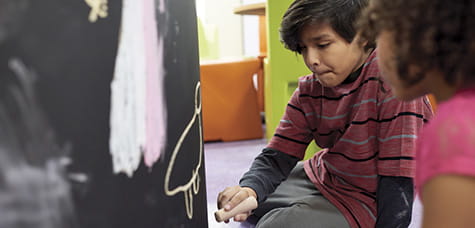Transforming the Trajectory of Mental Health Disorders
We’re harnessing the world’s most powerful supercomputer to revolutionize care for kids and teens
Mental health disorders are one of the most pressing health issues of our time—here in Greater Cincinnati and across the nation. Now more than ever, children and adolescents are struggling with diagnosable and treatable mental, emotional and behavioral disorders.
Even more alarming: Suicide is now the second leading cause of death in young people between the ages of 10 and 24.
Factor in the isolation from a global pandemic, remote learning, social media pressures, problems in the home, and economic and racial upheaval, and it’s clear why the need for accessible care has reached a critical level.
As a leader in mental healthcare, we’re innovating ways to prevent, radically improve, and even cure anxiety, depression and suicidal thinking.
“As we work together to create a brighter future for kids, as a community and society we have to prioritize education, prevention, treatment and cures for mental health disorders,” says Tracy Glauser, MD, associate director of our Research Foundation. “And research is a critical component to all of that.”
Enter our Mental Health Trajectory Project, a bold new research initiative that will help us identify children and teens at the earliest stages of their mental health challenges. Because early intervention and treatment lead to the best outcomes, this work will ultimately transform and improve care.
Revving Up Research with Bold New Technology
By utilizing artificial intelligence and harnessing the most advanced computer technology available, we can integrate a child’s biological and environmental factors to create mental health trajectories.
“Much like we use pediatric growth charts for height, weight and head circumference to identify potential and current health risks, we can also create mental health trajectories using a child’s medical history, genetic traits and environmental exposures,” Dr. Glauser explains.
Building such comprehensive predictive models over time takes the efforts of scientists across multiple divisions of the medical center. It also means collecting and analyzing huge amounts of data from patients with mental health diagnoses.
We couldn’t do this large-scale work without key partners, like the U.S. Department of Energy’s Oak Ridge National Laboratories (ORNL). One of a system of 17 labs across the country, ORNL has a rich history of solving difficult problems with national scope and impact.
Cincinnati Children’s is the first and only mental health research partner of the Tennessee-based lab, which is home to the world’s fastest supercomputer, called Summit.
To get an idea of Summit’s power and speed, it helps to look at the immense volume of data collection necessary for our Mental Health Trajectory Project. Processing thousands of datasets derived from patients’ medical histories, environment and genetics would require roughly 10 years of computing time on a standard desktop computer for just a single analysis.
However, Summit’s peak performance at 200,000 trillion calculations per second—or 200 petaflops—would accelerate solving this same complex data analysis to between a few hours and a day, giving us indications of mental health decline as they happen, and allowing intervention to start earlier than ever.
This unique collaboration will enable us to increase access to quality intervention and treatment in all settings—inpatient, outpatient, in schools, pediatricians’ offices and at home.
With our initial project’s focus on depression, anxiety and suicide, an earlier diagnosis means better and more personalized care for these all-too-common conditions. It can even mean life-saving preventative care before a devastating crisis occurs.
Building Pathways to Help More Kids
We’ve made great progress for the kids and families who rely on us, but philanthropy is still needed to help advance this work and meet the growing need for mental healthcare.
Through collaboration, we can expand to develop trajectories not only for anxiety, depression and suicide—but also for other conditions, such as attention deficit/hyperactivity disorder and eating disorders.
With help from charitable partners who support research discovery, we can forge a brighter future for children and adolescents in our community and around the world.
For more information or to make a gift, please contact Ashley Titus at 513-803-6593 or ashley.titus@cchmc.org.




